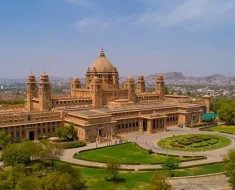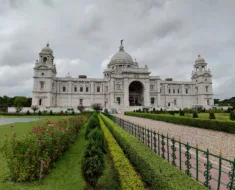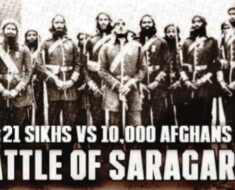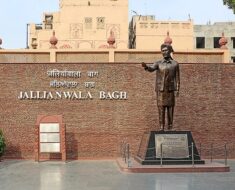Siachen Glacier is the highest Battleground on Earth.
A place where even eagles do not dare to fly, our soldiers live there for months together guarding the motherland.
The place where more soldiers die because of adverse climatic conditions rather than bullets and war.
Here is a list of some unbelievable facts about Siachen Glacier which will surely freeze your mind.
Fact #1 Location – Siachen Glacier
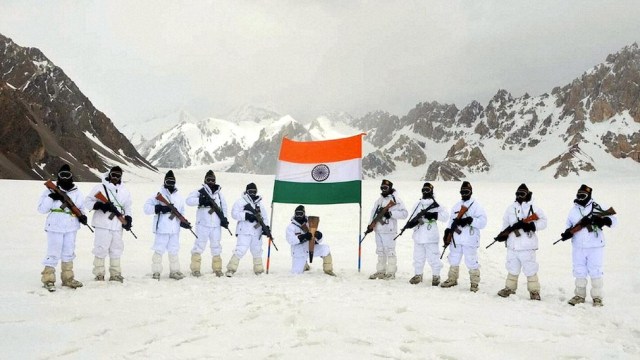
The Siachen Glacier is located in the eastern Karakoram range in the Himalayas.
It is the longest glacier in the Karakoram almost 76 km long. The Siachen Glacier is the second-longest glacier in the world’s non-polar areas.
The Siachen Glacier is at an altitude of 5,753 m above sea level at its head at Indira Col on the China border down to 3,620 m at its terminus.
Since 1984, the entire Siachen glacier and all its major passed are under the control of the Indian administration.
Pakistan only controls the region west of Saltoro Ridge, far away from the glacier. And makes a territorial claim over the Siachen Glacier.
This no man’s land of inhospitable climate and, avalanche-prone terrain has claimed more lives than gunfire.
Read More: Bhikaiji Cama: The First Lady to Hoist India’s Flag on Foreign Soil
Fact #2 India vs Pakistan
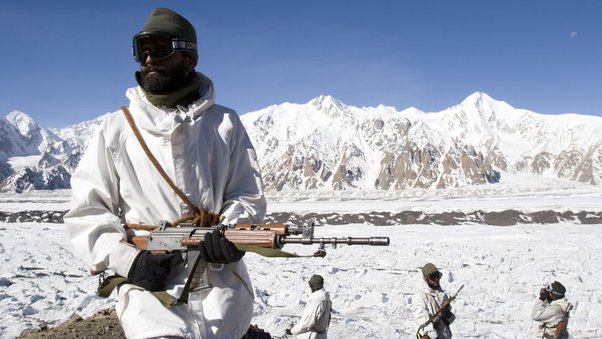
Indian and Pakistani forces are stationed at Siachen Glacier in the Karakoram range since 1984.
Almost 10,000 Indian and 20,000 Pakistani Soldiers combined are stationed at Siachen Glacier.
With temperatures going down all the way to minus 70 degrees, low atmospheric pressure, and only 10% of the amount of oxygen is present in Siachen.
Even in such adverse and harsh conditions, these brave souls are never deterred to perform their duty.
Read More: India Gate – Iconic Symbol of Patriotism
Fact #3 Siachen Glacier Dispute
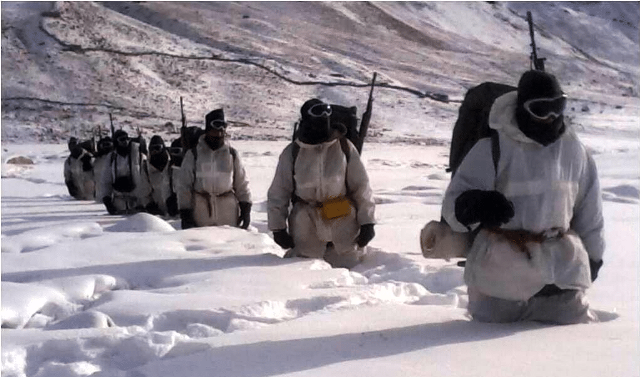
Prior to 1984, there were no troops either from India or Pakistan present at the Siachen Glacier.
Pakistan sent expeditions through POK and as a counter-expedition, India also sent its men which created a territorial dispute.
Pakistan was the first to start Operation Ababeel to capture Siachen Glacier and its passes but India countered them with Operation Meghdoot and captured the whole of Siachen Glacier and its passes – Sia La, Bilafond La, Gyong La, Yarma La, and Chulung La.
Indian Army launched another operation to capture the Quaid post which was occupied by Pakistan.
Quaid post was strategically very important as it overlooked the Indian Army post and gave Pakistan army an advantage.
Operation Rajiv was successful with the heroes’ efforts of Naib Subedar Bana Singh.
He was awarded – the Highest War-time Gallantry award – Param Vir Chakra and later the post was renamed Bana Post after his name.
Read More: Jallianwala Bagh Massacre – A Murderous Incident in the History of Mankind
Fact #4 Harsh Climate
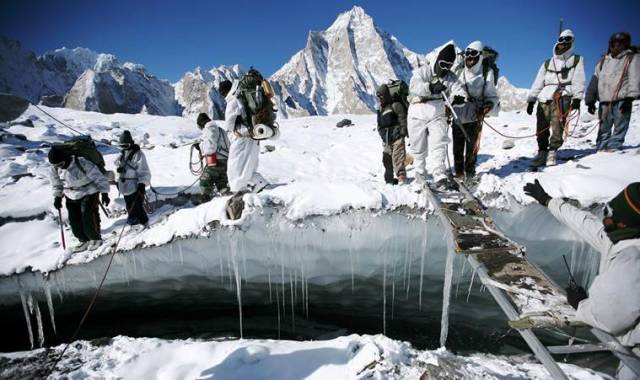
We find it hard to spend harsh winter conditions in our cities but our superheroes do not think twice when nominated for the Siachen glacier tenure.
They lose weight and appetite and sleep in such harsh climatic conditions. Just for us to be safe and sound at our homes.
They eat canned food and do not have water to drink.
In a place where an orange or apple turns into a hard cricket ball in seconds how can water be in its natural state-liquid?
This is not the end. They have a great danger of losing their eyesight, limbs, and even life.
A place where the risk of avalanches is so high. Many of our brave hearts have lost their lives because of dreadful snowstorms, and avalanches.
Some of the bodies could be recovered and some not, even then these angels never step back and have been guarding us for years.
Read More: Battle of Saragarhi – 21 Sikhs Vs 10000 Afghans
Fact #5 Deaths at Siachen Glacier

The scroll of honour at the Siachen base camp reads – “Quartered in snow, silent to remain. When the bugle calls, they shall rise and march again”
Soldiers not only have to deal with extremely low temperatures but also avalanches.
In 2012 Gayari sector avalanche killed 140 Pakistani troops alone.
Pakistan army has lost 353 soldiers in various operations recorded between 2003 and 2010 near Siachen.
Indian Army has lost 869 soldiers on the Siachen glacier due to climatic conditions and other factors to date since the Army launched Operation Meghdoot in 1984.
With extreme isolation, lack of drinking water, and cold temperatures, soldiers face a lot of health problems.
Some of them include blood clots in the brain or limbs. One-third of all the causes of death is because of blood clots.
The chances of developing a blood clot in the body are 100 times higher in Siachen than at sea level.
It is not rare to find a lot of soldiers returning home with amputated limbs.
Fact #6 High Moral of Soldiers

Soldiers have to have high morale fighting there. They not only have to worry about the weather but have to take care of themselves and fight the enemy also.
They have to be properly equipped and cover their bodies in the right matter. If their skin touches metal objects for just over 15 seconds, it will incur frostbite.
Frostbite is a medical condition in which localized damage is caused to the skin and other tissues due to freezing. And this can leave amputation of fingers or toes as the only alternative.
Such weather conditions are out of the imagination for people like us.
But our fearless and lionhearted Soldiers stay there 24X7 round the year for the safeguard of Motherland.
As every inch of this land belongs to our nation and must not cede into the hands of the enemy.
Fact #7 Only the Best of the Friends and Worst of the Enemies Visit Us
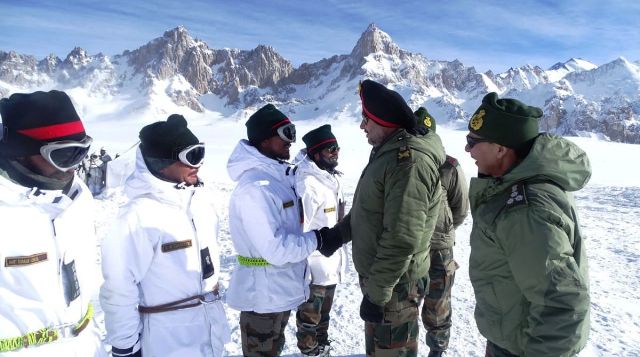
There is a local saying,” This land is barren and the passes are so high that only the best of the friends and worst of the enemies visit us”.
Winds in Siachen cross 100mph in no time. Snowstorms can last for three weeks and yearly snowfall in Siachen can be over three dozen feet.
Our soldiers have to be physically and mentally, fit and tough to stay there.
At Siachen Glacier, the weather is the biggest enemy. No one knows when the supply will be delivered due to unpredictable weather conditions.
Pilots risk their lives even on the clearest days by going to such a high altitude. They drop the supplies at the forward posts which are at a height of more than 20,000 ft.
Moreover, they get less than a minute to drop the supplies as Pakistani army posts are just a few 100m away.
Visibility goes to zero pretty often and you cannot even see a handheld up right in front of your eyes.
This is the reason soldiers tie each other with ropes so that no one loses each other’s sight in such snowstorms
A plaque at the headquarters of the Indian Army reads “We do difficult as a routine. The impossible may take a little longer”
India spends around 80% of the total time in preparations of the solider for this battleground.
Read More: Statue of Unity – Tallest Statue in the World
Fact #8 Equipment and Survival Skills

Indian Army has done really well to prepare their soldiers for these exceptional conditions. They invested their money in high-altitude equipment that has really paid off.
Extreme Cold Weather Clothing System (ECWCS) and mountaineering kits for soldiers guarding the glacier at heights ranging from 16,000 feet to 20,000 feet.
Thermal insoles, snow goggles, ice axe, boots, avalanche victim detectors, rock pitons, karabiner-related mountaineering equipment, and sleeping bags all were sourced from countries like US Australia, Canada, and Switzerland but now all these equipment are produced in India.
Indian soldiers have to go through rigorous training and develop special skills like crossing crevasses, climbing over and cutting through 90-degree ice walls, avalanche clearing, drilling, and casualty evacuation to survive and fight in such extreme conditions.
These are taught over a month at the Siachen Battle School at the base camp.
Fact #9 Government’s Role to Demilitarize Siachen Glacier
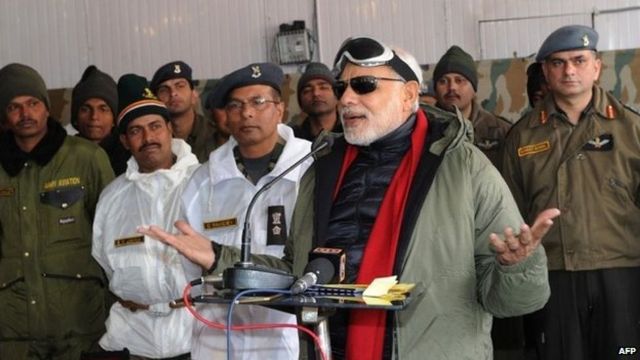
There have been nearly 13 talks in the past 30 years in order to demilitarize the area.
Unfortunately, as soon as the agreement was reached political influence prohibited it from taking place.
India’s government has shown support to protect the glacier region and it has been spending alone $1.3 billion dollars on the fight in Siachen.
This means that around $1 million per day is spent by the government in order to protect the territory.
India controls the heights and is loath to withdraw for fear Pakistan might walk in. India says it is unwilling to bring its forces down until Pakistan officially authenticates the positions they hold.
Read More: Sarojini Naidu – ‘The Nightingale of India’
Fact #10 Siachen War Memorial
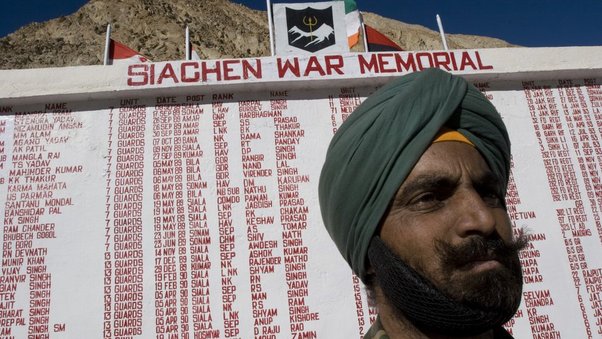
There is a war memorial at the bank of the Nubra river which has the names of Indian soldiers who laid their lives in Siachen.
This article is a grand salute to our soldiers and their families who dare to send their sons to defense forces and wait all their lives for them to be home; and to our soldiers, words won’t be enough to express our heartfelt gratitude!




